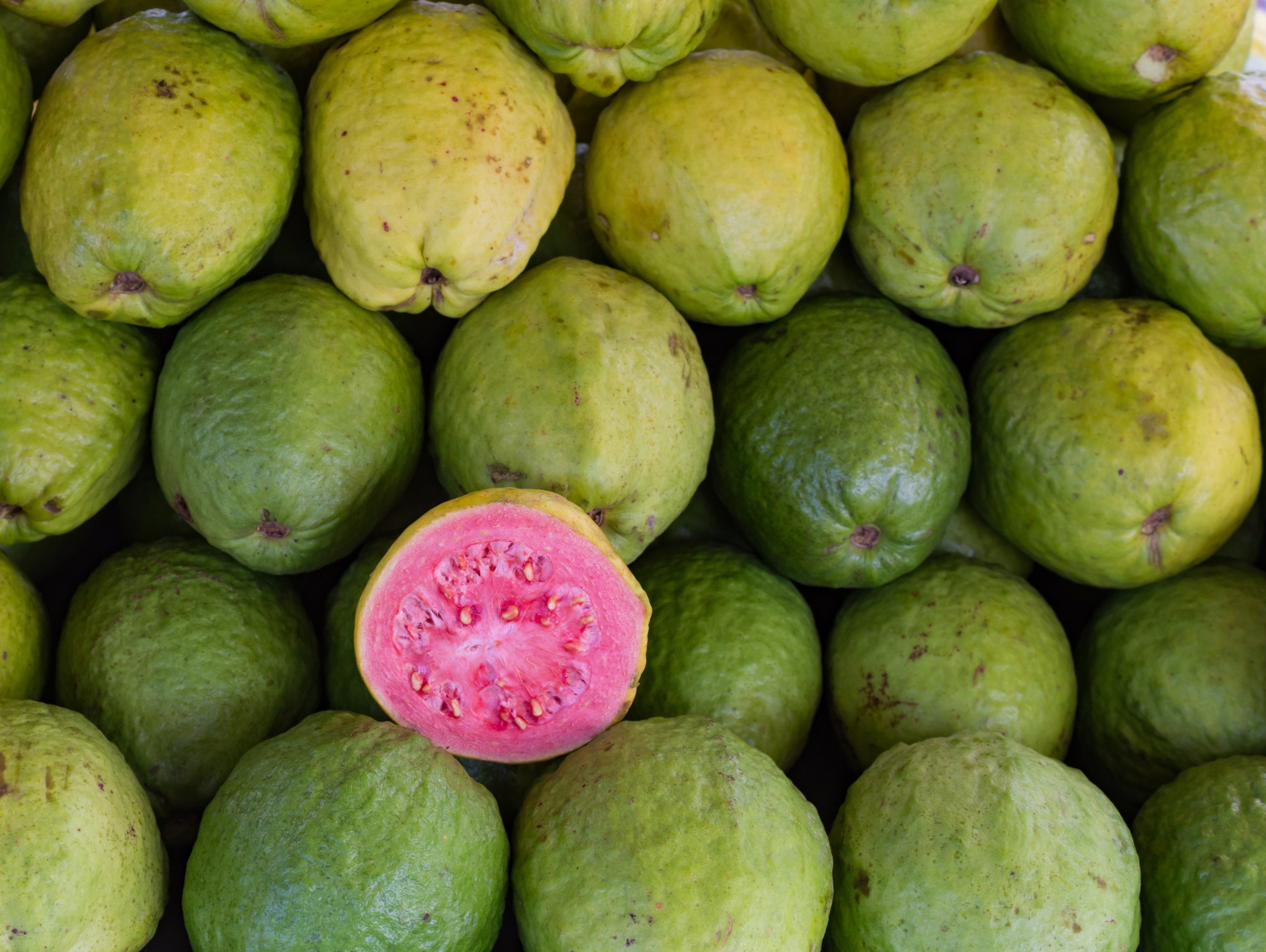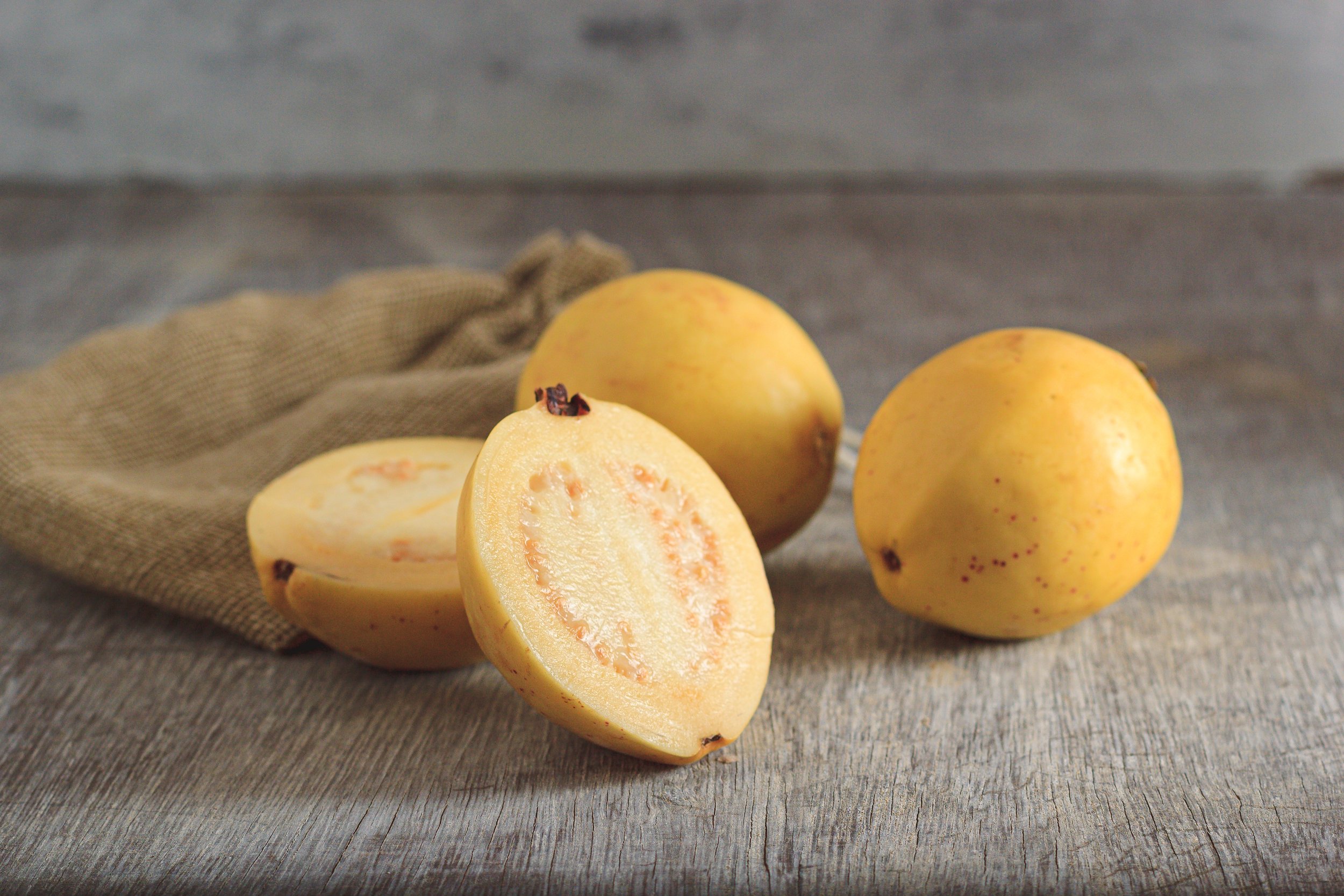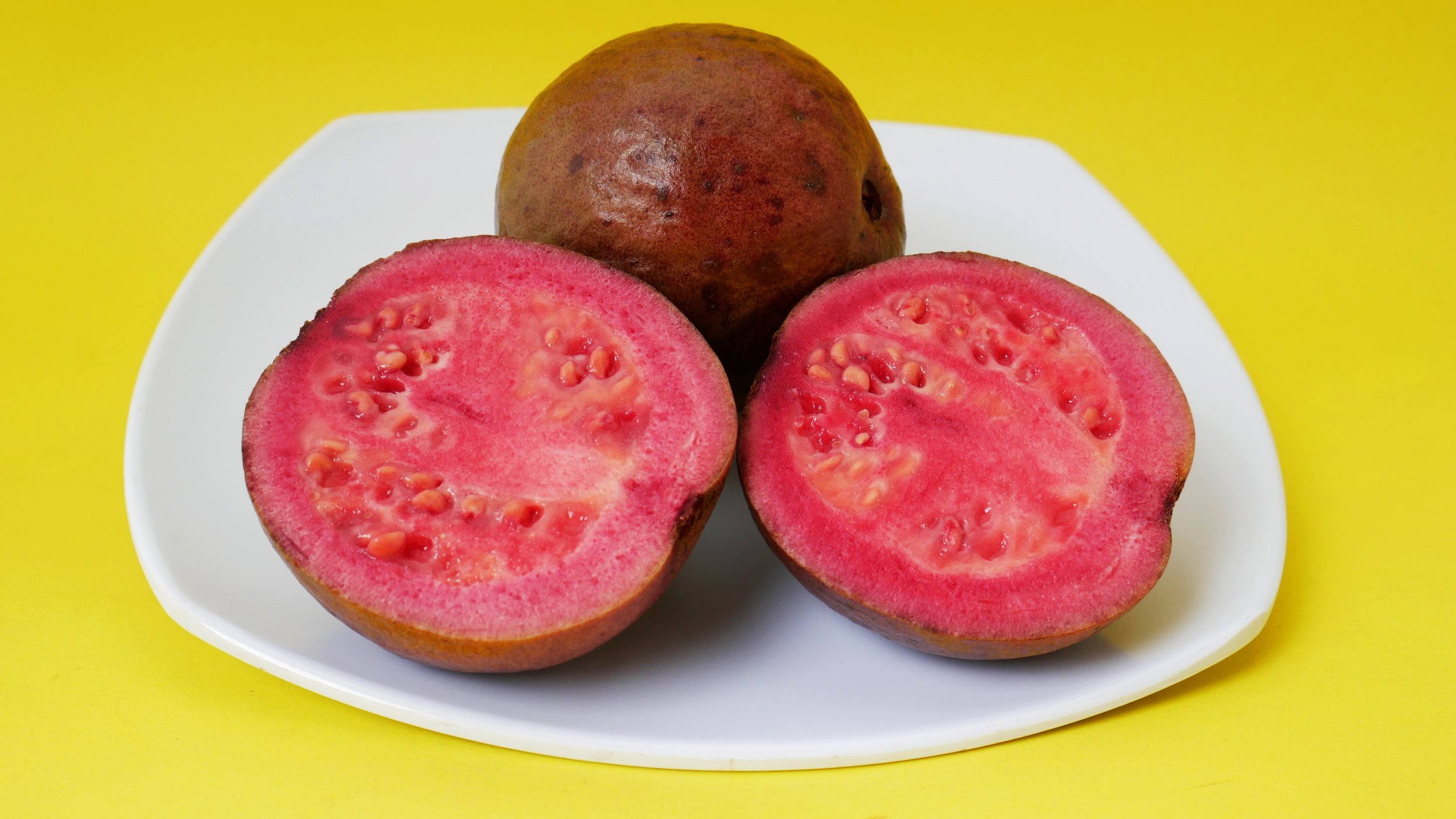Guava
Psidium guajava
Family: Myrtaceae
Widely cultivated in tropical and subtropical regions around the world, guava fruits can range in size from as small as an apricot to as large as a grapefruit. Various cultivars have white, pink, or red flesh; a few varieties feature red (instead of green or yellow) skin.
The plants grow most often as upright, multistemmed shrubs reaching 6-12’ tall. In completely frost free zones they can reach as much as 30’ tall. The leaves are evergreen and large. Blooms occur in spring and early fall. Fruits take 3-5 months to ripen. Plants are self fruitful, but having more than one encourages cross pollination and will give you more fruits.
Guavas are native to Southern Mexico and Central America.
USES
Guava is often simply eaten fresh by itself, rind and all. The rind has a ton of Vitamin C.
Guava is also used in salads, made into desserts, or cooked to make jams, or made into syrup. Guavas are high in pectin, the naturally occurring substance in fruit that helps with thickening in pies and jams.
Guava is a great flavor for cocktails. Making a syrup of guava will give you a great ingredient for upping your cocktail game—try making a margarita with it.
GROWING
The most important part of growing guavas is choosing a location that protects plants from frost as well as afternoon sun in summertime. An East facing wall is ideal, which allows for sun until the afternoon, while being the first wall to warm up in the morning. If temperatures freeze, it is a good idea to protect plants.
Frost will damage the foliage, and temperatures into the mid twenties will start to damage stems. Plants can grow back from frost damage readily.
Because of their shallow roots, Guava need shallow watering every day or every other day during the hottest part of the summer. Water once a week in winter. Mulching well around the roots will help—watch not to bury the root flare (do not bury the base of the plant).
Plant in well-amended garden soil for best performance. Apply a general purpose, organic fertilizer in February, May and August.

pink guava

yellow guava

red guava

white guava


